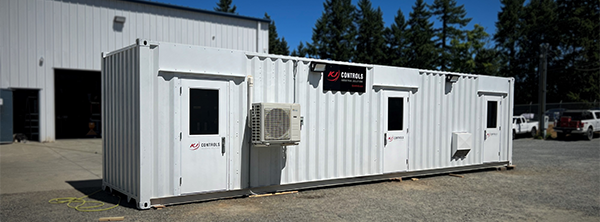In recent years, the concept of repurposing shipping containers has gained significant popularity in various industries. One application that has emerged is the use of shipping containers as E-Houses, also known as electrical houses. These modified containers provide a versatile and cost-effective solution for housing electrical equipment and control systems. In this blog, we will explore the benefits of using shipping containers as E-Houses and how they are revolutionizing the world of modular electrical solutions.
Mobility and Scalability:
One of the key advantages of using shipping containers as E-Houses is their mobility. These containers are designed to be transported across long distances using various modes of transportation such as trucks, trains, and ships. This mobility allows E-Houses to be easily relocated to different sites as per project requirements, making them ideal for temporary installations or projects that require frequent relocations. Furthermore, the modular nature of shipping containers allows for scalability. Multiple containers can be stacked or combined to create larger E-Houses, providing flexibility to meet changing demands and project specifications.

Cost-effectiveness:
Compared to traditional brick-and-mortar buildings, shipping containers offer a cost-effective alternative for E-House construction. The containers are readily available and can be purchased or leased at a fraction of the cost of constructing a conventional building. Additionally, their modular design reduces construction time and labor costs significantly. With minimal on-site assembly required, E-Houses built from shipping containers can be up and running in a fraction of the time it takes to construct a traditional structure.
Durability and Security:
Shipping containers are designed to withstand harsh conditions during transport and storage, making them highly durable. Constructed from corten steel, these containers are resistant to corrosion, extreme weather conditions, and fire. This durability ensures the safety and longevity of the electrical equipment housed within. Moreover, shipping containers are equipped with robust locking mechanisms, providing enhanced security for valuable electrical equipment against theft and vandalism.
Customization and Flexibility:
Shipping containers can be easily modified and customized to meet specific project requirements. They offer a blank canvas for design and can be equipped with insulation, ventilation systems, electrical wiring, flooring, and windows to create a comfortable and functional E-House environment. Container-based E-Houses can be tailored to accommodate various types of electrical equipment, control rooms, switchgear, transformers, and other specialized infrastructure. This flexibility allows for efficient integration and easy access to the equipment, simplifying maintenance and operations.

Sustainability:
Repurposing shipping containers as E-Houses contributes to sustainable practices. Recycling these containers for a new purpose reduces the demand for new building materials, thereby minimizing environmental impact. Additionally, the modular nature of container-based E-Houses allows for disassembly and reassembly, promoting resource optimization and reducing waste. By adopting container-based solutions, companies can align with their sustainability goals and reduce their carbon footprint.



